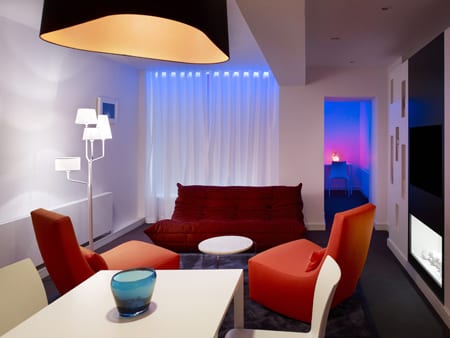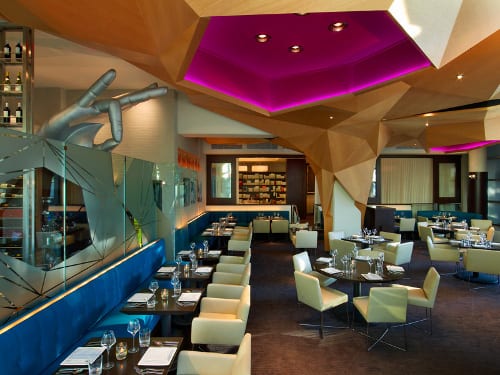 Dan Kwan
Dan Kwan
Senior vice president and managing director
Wilson Associates/Blueplate Studios
New York
When Tony Chi and Philip George are your mentors, chances are your career will be poised for success, too. Dan Kwan, who helms Blueplate Studios, Dallas-based Wilson Associates’ division devoted to food and beverage concepts, has been laying his design tracks for years-first building miniature towns for his younger sister’s toys, eventually owning and operating 18 F&B concepts in Asia with his partner before landing at Wilson Associates. Here, he talks about falling for his designer wife, designing for an exciting new Chinese hotel brand, and the inspiring Japanese worldview of Wabi-sabi.
Did you always know you wanted to be a designer?
I honestly didn’t know until it hit me on the head. I was lucky. I had plenty of choices; I had been accepted into law, medicine, and engineering programs. To be frank, I just woke up one morning and decided to become an architect-guess I couldn’t live without style.
What are some of your first memories of design?
Playing with my little sister. Back in the day, she loved this line of toys called Playmobil. (They’re very stylish toys, I must say. They have experienced a recent renaissance.) She had everything from pirates to knights and astronauts. I would build mini towns and forts for her little action figures out of everything and anything I could get my hands on. Take the oversized diorama, for example. When ‘she-who-must-be-obeyed’ wanted to light up her little fiefdom, I tore apart Christmas tree lights for their little bulbs and re-wired them so they would light up the entire town and little sis could play in the dark.
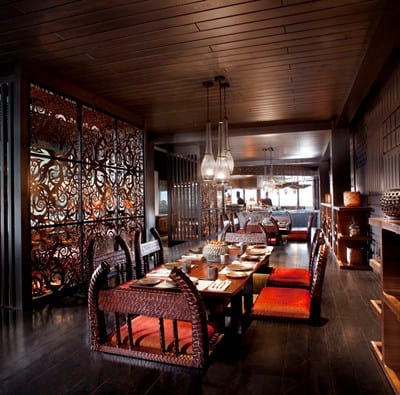
Makan Kitchen in Luala Lumpur – Indian seating area
How did you end up where you are today?
Luck. Straight out of school, I had the best mentors in the business, both whom have impacted my life in a very fundamental and profound manner. They taught me lessons that have stayed with me through all the years. Tony Chi taught me strict discipline and out of the box creativity. He pushed me to be more than what I thought I was and could be; for this, I have remained eternally grateful. Subsequently, Philip George taught me how to ‘become’ and ‘live’ as an architect. I can’t really explain it, but Phil, to this day, remains my role model.
Do you have a greatest lesson learned?
Respect the line, control the line.
How did you end up at Wilson Associates? What was it about the company that attracted you?
In a word: love, my wife Joanne. We worked collaboratively on the Hilton Kuala Lumpur. I was with my own outfit. We were awarded the design of the food and beverage outlets, and Wilson Associates was awarded the rooms. I remember first seeing her and going, ‘Wow,’ and then seeing her designs and going ‘WOW!’ The rest was easy. She lured me to Wilson.
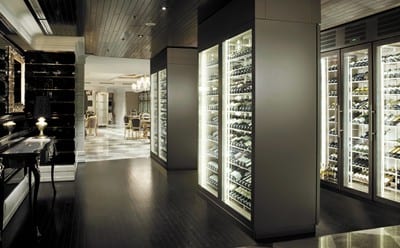
Lotte Hotel Moscow
Tell us about Blueplate Studios. How did that come about?
Since I was from Tony and Phil’s office, I was specifically hired to head up this new brand for Wilson Associates. Phil had designed the patron’s dining room at the Metropolitan Museum of Art and Le Bernardin in New York City, so given my background with him, I fell into the F&B camp early on and just kept going. I had also established a bit of a reputation on my own. At our peak, my partners and I owned and operated eighteen F&B concepts throughout Asia, so when Wilson Associates called, it seemed natural.
Tell us about your office culture and design process.
We are a family and totally collaborative in our approach. No opinion is left unsaid and no question is silly. The design process is freeform; whatever sparks creativity, be it a song, street poetry, the color of the sky just before a storm, the swirling forms of clouds.
We do not follow a linear approach, and we believe in ‘gut-level’ approaches: that your first instinct is the best one. We look at design holistically and not stylistically. We believe in storyboards as part of the process. We believe that all design is interdependent, from the brand identity, to the advertising campaign, to the chinaware, to the wall materials and kitchen equipment. They are all linked and all part of the design process. There is no separation.
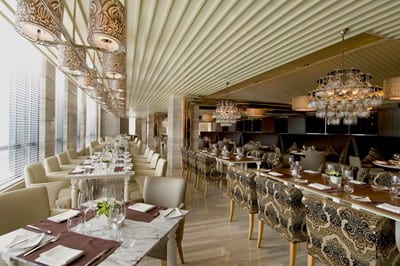
Hilton Beijing Wangfujing – Vasco’s
Why hospitality? Why restaurants?
Hospitality and restaurants make people smile.
What are some of the challenges of the industry today?
The lost art of sketching. I believe that design flows directly from the mind’s eye to the hand and NOT to the mouse. How can a young designer coming out of design school be uncomfortable with sketching? This keeps me up at night.

Hilton Kuala Lumpur – Zeta Bar
What’ s a recent project that was most challenging and why?
We are pitching on a really high-end boutique hotel in a Zaha Hadid building. The architectural design, being Hadid, is of course stunningly sculptural and highly poetic. Designing the interiors to complement this design has brought all our creativity to bear. By virtue of the exterior forms, the interior forms are equally complex and non-traditional. Being both angular and free flowing, we’ve been pushed out of our regular ‘design-boxes.’ We have to devise a highly operational hotel that maintains a sense of luxury. I would term this creation ‘functional sculpture’ or ‘useable art’ (for a lack of a better term). We have been able to merge the two very successfully with a terrific unifying concept, innovative spaces to match, and a fully functioning, efficient hotel to boot. I must admit that if built, it would be something we would be very proud of.
What’s one project that you are most proud of and why?
The Hilton Beijing Wangfujing stands out on my list of achievements. Why? Because the owner believed in us and left us to our own devices. We designed the hotel to what we thought best, and the owner supported us one hundred percent. The work was done in record time, twelve months from design to soft opening, just before the 2008 Olympics. To this day, it remains the only Hilton in China with the highest revenue and best customer satisfaction. We were also lucky to win numerous awards for this property.

Hilton Beijing Wangfujing – Chynna
What are some projects you are currently working on? What’s next for you?
The most exciting project that we are working on now is a new brand in China called Nuo, a collaborative effort between Kempinski and the Beijing Tourist Group. We were charged with defining what modern China and Chinese hospitality is all about, in a highly modern and stylized fashion. We are designing everything from the architecture to the interiors, from service standards to a new way of dining: a total design solution for the future. We have also been blessed to be the only design firm to be awarded the only ground-up hotel for Nuo.
Next is an über-cool Kempinski in Yanqi Lake, Beijing. It’s a total integration between art, architecture, and nature. We’re creating seamless spaces that blur the lines between outside and inside-between what’s real and what’s not. This project remains very close to my heart; terribly exciting and fulfilling.

Hilton Beijing Wangfujing – Chynna entrance
Most creative solution for a cool design feature that you have recently come up with?
A ‘vanishing space’: a restaurant that has no menu and transforms from service to service [where the] walls and floors move. It’s a transformer space that the user can tailor-make.
What would be your dream project?
A museum, any modern museum.
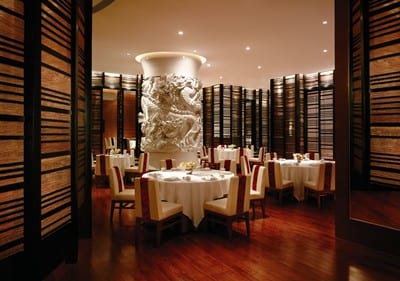
Imperial Court Chinese Restaurant a MGM Macau
What’s the key to a successful collaboration between designer and client?
Haha. Stay out of my way?
What’s the most important thing to remember when designing a restaurant?
That it is a social place and not a monument to design. People move about and spaces need to be seamless. The other thing is that if you have no kitchen, you have no restaurant. A good restaurant is an operating precision instrument and has to work as such. We are just here to make it look great. In this case, form really does follow function and an ‘elegant’ machine.
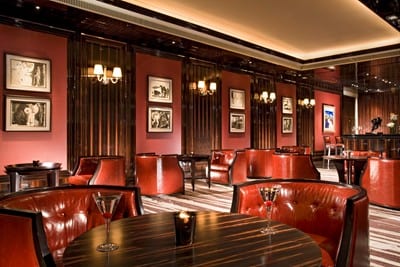
St. Regis Singapore – Astor Bar
What’s your favorite hotel and restaurant for design (that you didn’t design) and why?
Puli Shanghai is the hotel for me. The design just ceases to exist in light of how great it feels.
Co. in NYC is the restaurant for me: out of this world modern pizza in an honest setting
Motto to live by…
Wabi-sabi: life is more than the things in it; it’s about the moments between. Beauty lies in the formless, unspoken, and unseen.
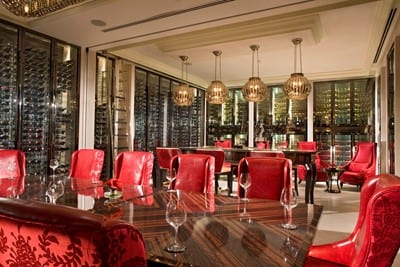
S. Regis Singapore – Decanter
Greatest accomplishment so far?
Getting a four-page spread in Vogue Turkey for design and not fashion.
If you weren’t a designer, what would you be?
Vet.
When you are not in the office we can find you…
Scooting around the East Village with my wife on our Xootrs.
If you could have supper with anyone living or dead, who would it be?
Mies van der Rohe.
Describe that meal, the wine.
New York hanger steak (medium) with pommes frites and a ‘Super Tuscan,’ followed by an unvarnished Partagas 898.

